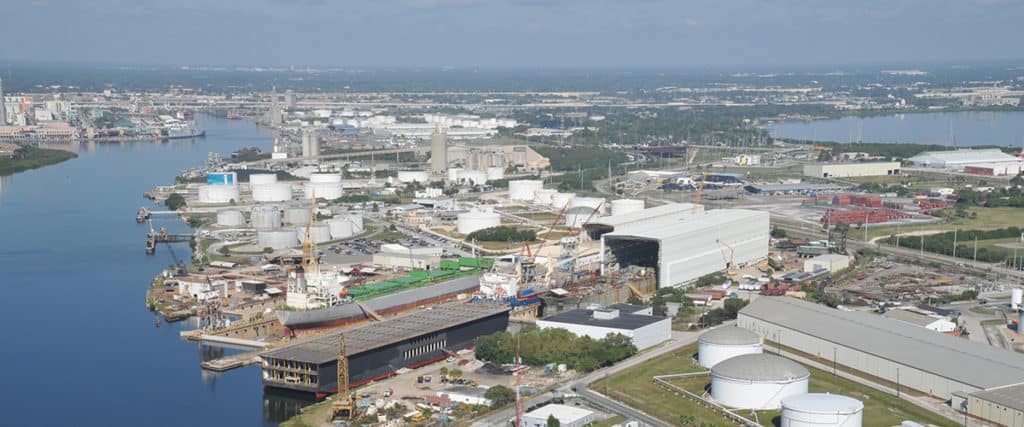New container service provides Florida greater and cheaper access to Asia’s exporters; start-up aims to reduce per-diem fees on containers.
The trade war between the U.S. and China sucked a lot of oxygen out of the story of world trade over the last year. But even as two governments have not yet come to terms on a trade deal, businesses in both countries are still looking at trade as a growth driver. Case in point: China COSCO Shipping, the third largest ocean carrier by size, inaugurated a new weekly containership service to Port Tampa Bay this week, with the arrival of the M/V Cosco Piraeus. COSCO vice president Howard Finkel says the new service is the culmination of several years of talks with Port Tampa Bay on its first direct service to and from China.
“We’ve been talking to the Tampa Bay people for years,” Finkel said. “We go where the shippers want us to go.”
In public statements, COSCO estimates the new service will bring in about 500 containers a week into Tampa. The number of additional containers coming into Port Tampa Bay by the new COSCO service pales in comparison to the roughly 16,000 containers being brought in daily through the Port of Savannah. But it is a step up for Port Tampa Bay, which saw total throughput of 87,526 teu in containers last year. The Gulf Coast port spent $24 million for two additional ship-to-shore cranes as it readies to handle a bigger piece of the Southeast freight market.
“Some of the major ports get congested and people want alternatives,” Finkel said. “People are spreading their distribution centers throughout the United States.”
Containers coming into Port Tampa Bay have easier reach to central Florida’s I-4 corridor, which is becoming a major distribution center network for shippers such as Wal-Mart (NYSE: WMT), Amazon (Nasdaq: AMZN), and Home Depot (NYSE: HD). Among trans-shipment markets outside the U.S. most served by the port, the Caribbean stands out with most of the port’s vessel demand coming from Jamaica, according to data from shipping analytics firm VesselsValue.

Ocean Network Express adds larger ship
Japanese liner alliance adds new 14,000-teu ship to roster. (Vessel Finder)
Japanese shipowner trial heat recovery system
New coal carrier designed to use exhaust heat to generate electricity. (Seatrade Maritime)
Ocean carrier trials blockchain for shipment
Pacific International Lines cuts transfer of title deed to one second. (Safety4Sea)
China’s slow growth set to hit bulk carrier companies
Reduced industrial demand for iron ore and coal likely to impact earnings. (Lloyd’s List)
Thailand’s largest container terminal opens
Hutchison Ports officially starts up $600 million facility.
Detention and demurrage are too high
Thanks to delays and backlogs at U.S. ports, shippers are facing higher detention and demurrage charges than ever before. The issue is such that the U.S. Federal Maritime Commission staged a year-long investigation into the matter. But as FreightWaves’ Vishnu Rajamanickam reports, shippers do have alternatives for paying those fees. Start-ups such as Container xChange offer shippers the use of containers for minimal per-diem fees. Likewise, shippers are able to negotiate detention and demurrage fees with ocean carriers.










